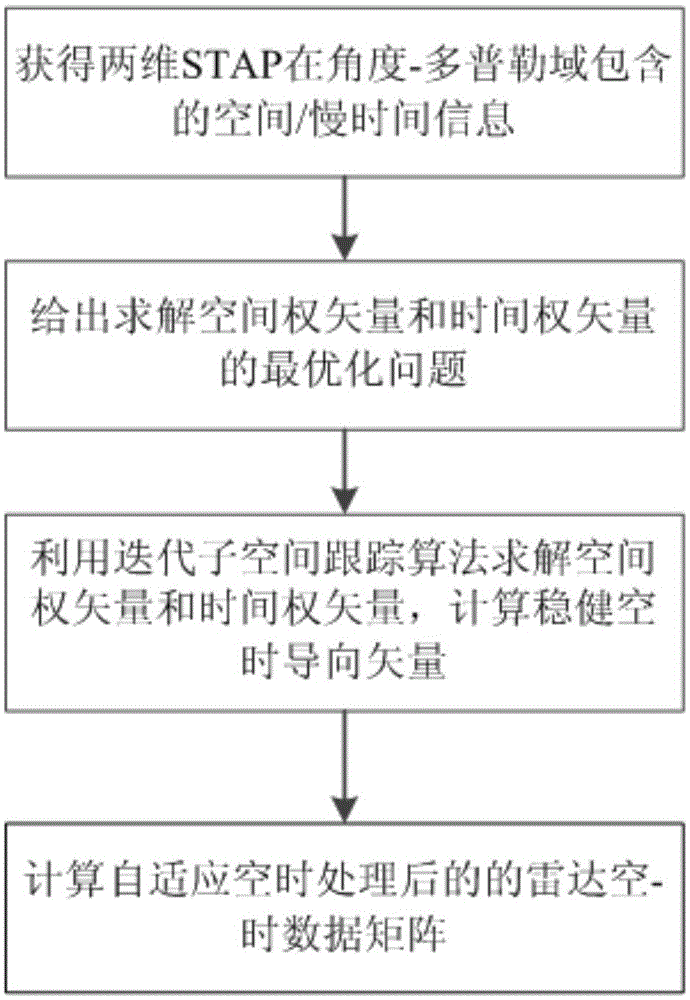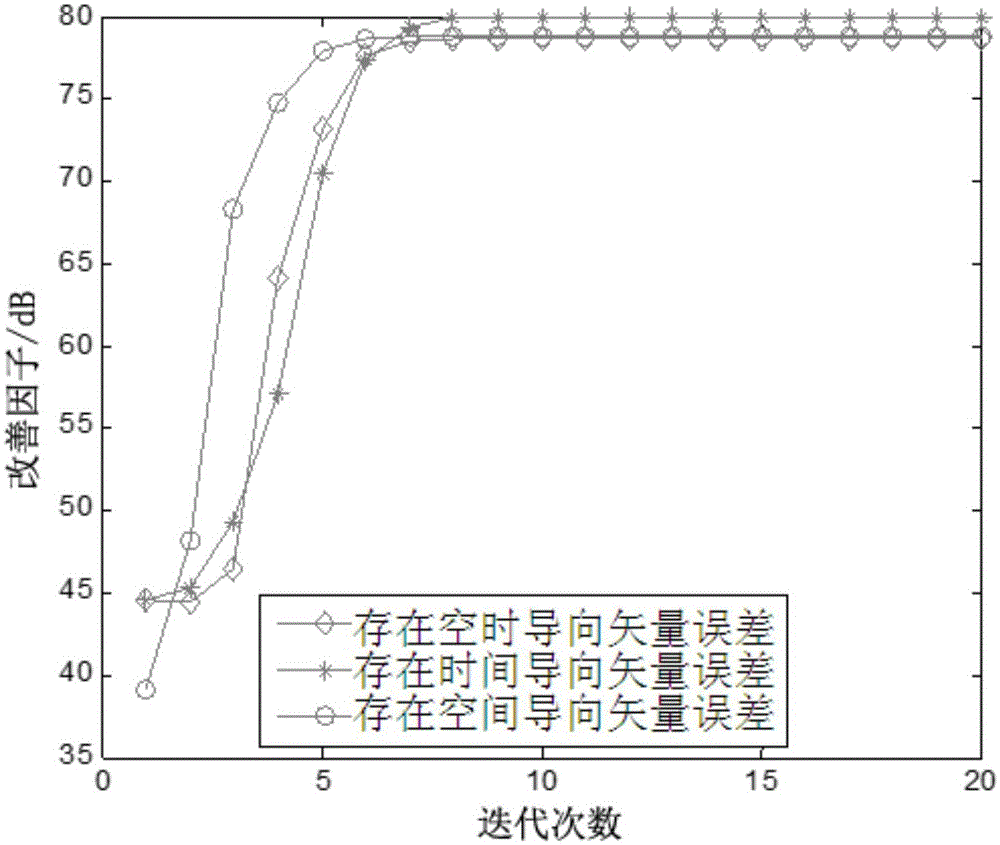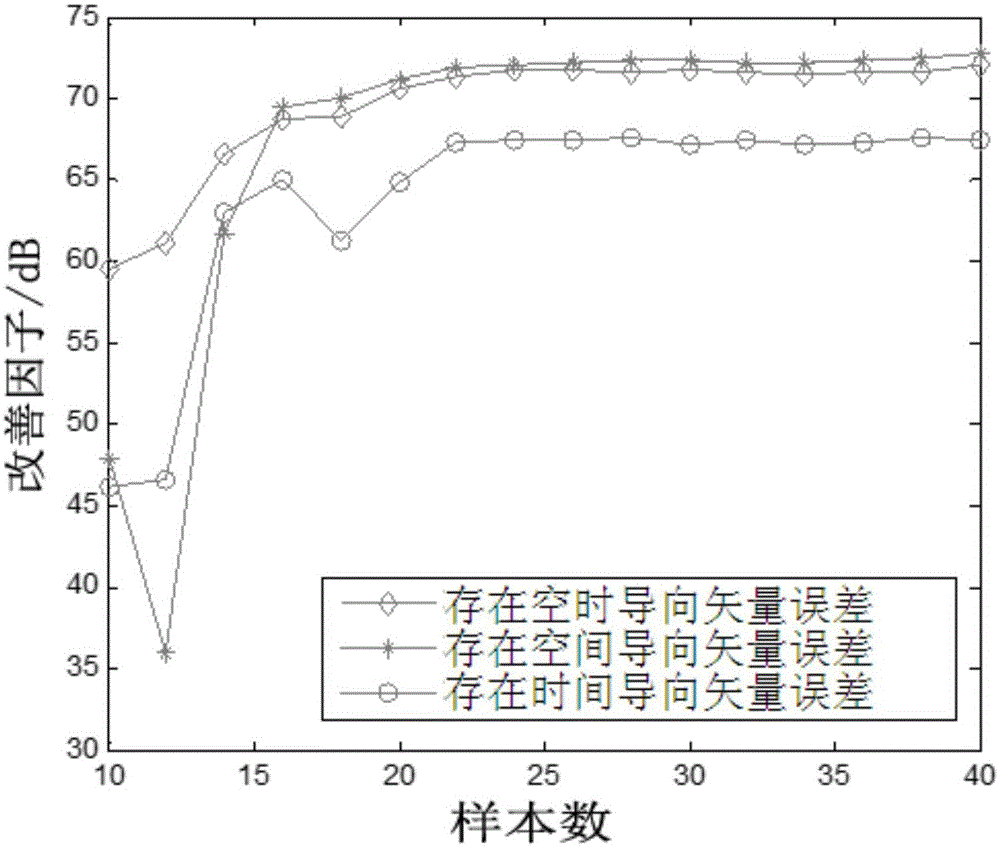Radar robust space-time adaption processing method based on iterative subspace tracking algorithm
A technology of space-time self-adaptive and tracking algorithm, applied in the field of radar, can solve the problem of data reduction and affect the effect of space-time self-adaptive processing, and achieve the effect of low time complexity and robust space-time self-adaptive process
- Summary
- Abstract
- Description
- Claims
- Application Information
AI Technical Summary
Problems solved by technology
Method used
Image
Examples
Embodiment Construction
[0028] refer to figure 1 , the radar robust space-time adaptive processing method based on iterative subspace tracking algorithm of the present invention comprises the following specific steps:
[0029] Step 1. First, the space-time data matrix X received by the known radar is:
[0030]
[0031] Wherein, x(n, k) is the received data of the nth antenna and the kth pulse, n=1, 2,..., N, N is the number of antennas, k=1, 2,..., K, K is the number of pulses;
[0032] Then, according to the space-time data matrix X received by the radar, the two-dimensional space-time adaptive processing contains the space / slow time information contained in the angle-Doppler domain by the principle of maximum likelihood estimation, that is, the space-time information of P range units is obtained. -time data matrix, wherein, the space-time data matrix X of the pth distance cell p for:
[0033]
[0034] where x p (n, k) is the received data of the p-th distance unit in the received data of...
PUM
 Login to View More
Login to View More Abstract
Description
Claims
Application Information
 Login to View More
Login to View More - R&D
- Intellectual Property
- Life Sciences
- Materials
- Tech Scout
- Unparalleled Data Quality
- Higher Quality Content
- 60% Fewer Hallucinations
Browse by: Latest US Patents, China's latest patents, Technical Efficacy Thesaurus, Application Domain, Technology Topic, Popular Technical Reports.
© 2025 PatSnap. All rights reserved.Legal|Privacy policy|Modern Slavery Act Transparency Statement|Sitemap|About US| Contact US: help@patsnap.com



